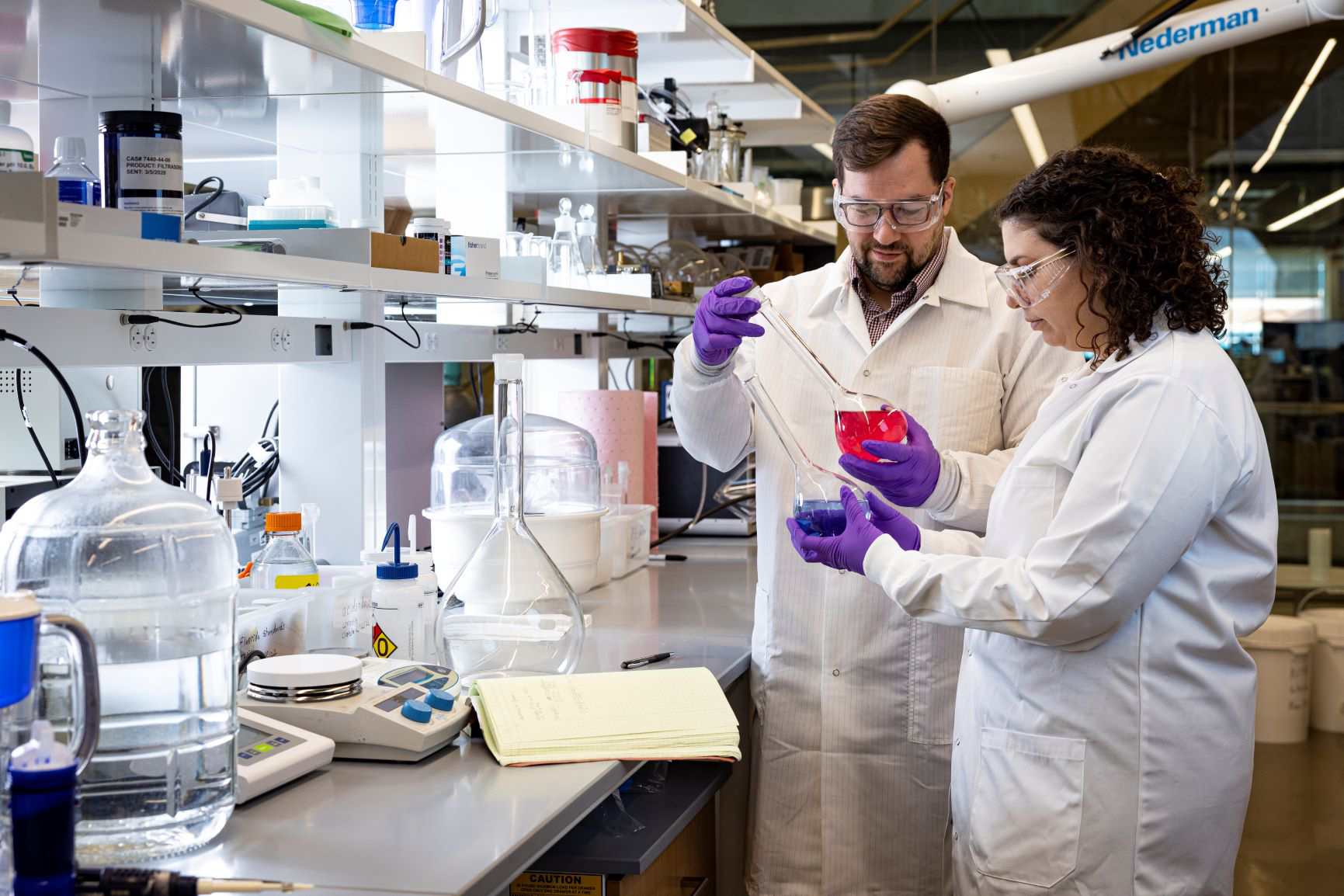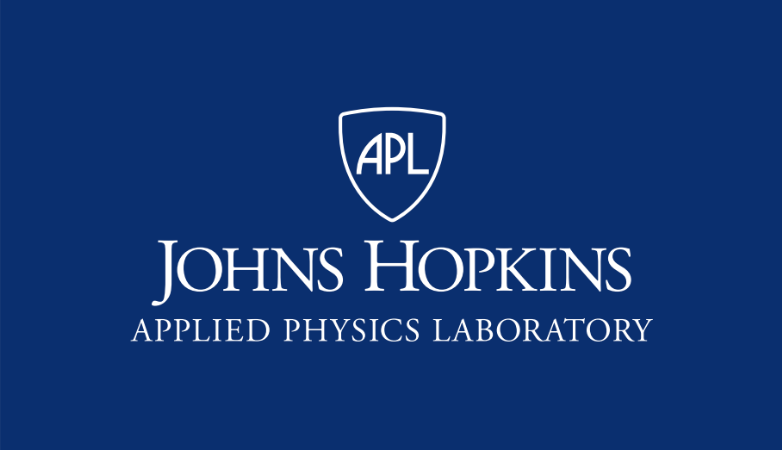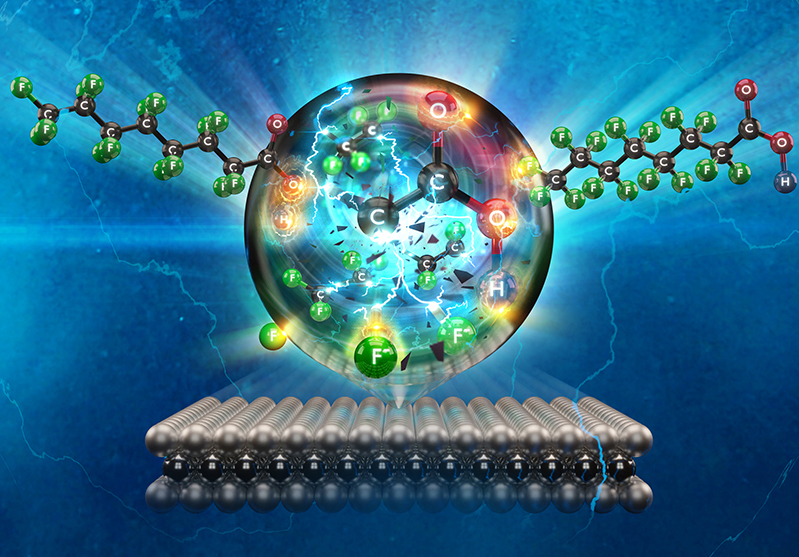Our Contribution
A Clean, Cost-Effective Method to Eliminate PFAS in Water
PFAS, or perfluoroalkyl and polyfluoroalkyl substances, are a group of some 5,000 artificial chemicals commonly found in water, household items, food packaging, firefighting foams, and a plethora of other industrial applications. They’re also, consequently, found in wildlife and human beings. Their tendency to linger indefinitely in the environment without degrading has earned PFAS the label “forever chemicals.” Scientists from Johns Hopkins APL are developing several technologies to capture and destroy these “forever chemicals.” The APL team has demonstrated an enhanced filtration technique to capture PFAS and an ecofriendly way to destroy them. Together with a previously published electrochemical destruction technique and work focused on developing PFAS replacements, APL is building a portfolio of technologies aiming to enable full PFAS remediation. Remediation of Per- and Polyfluoroalkyl Contaminated Materials Removing Forever Chemicals via Amphiphilic Functionalized Membranes Destruction of Per/Poly-Fluorinated Alkyl Substances by Magnetite Nanoparticle-Catalyzed UV-Fenton Reaction Novel Niobium-Doped Titanium Oxide Towards Electrochemical Destruction of Forever ChemicalsRelated Publications
Zhiyong Xia, James Johnson, Jesse Ko, et al.
US Patent No. 20230001251-A1 (pending), Jan. 5, 2023
James Johnson, K. Michael Salerno, Danielle R. Schlesinger, et al.
npj Clean Water, vol. 5, no. 55, 2022, doi:10.1038/s41545-022-00193-y
Danielle R. Schlesinger, Collin McDermott, Nam Le, et al.
Environ. Sci.: Water Res. Technol., vol. 8, pp. 2732–2743, 2022, doi:10.1039/D2EW00058J
Jesse Ko, Nam Le, Danielle Schlesinger, et al.
Scientific Reports, vol. 11, 2021, doi:10.1038/s41598-021-97596-7











